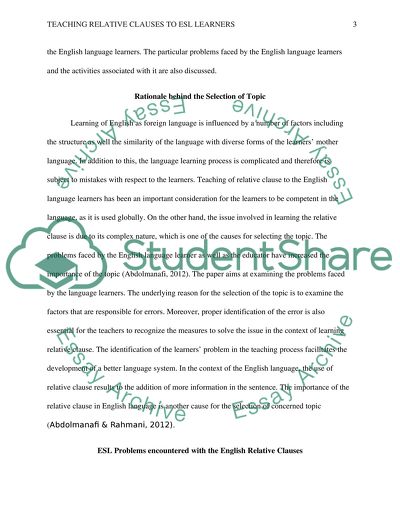Cite this document
(“Teaching Relative Clauses to ESL Learners Research Paper”, n.d.)
Retrieved from https://studentshare.org/education/1691335-teaching-relative-clauses-to-esl-learners
Retrieved from https://studentshare.org/education/1691335-teaching-relative-clauses-to-esl-learners
(Teaching Relative Clauses to ESL Learners Research Paper)
https://studentshare.org/education/1691335-teaching-relative-clauses-to-esl-learners.
https://studentshare.org/education/1691335-teaching-relative-clauses-to-esl-learners.
“Teaching Relative Clauses to ESL Learners Research Paper”, n.d. https://studentshare.org/education/1691335-teaching-relative-clauses-to-esl-learners.


